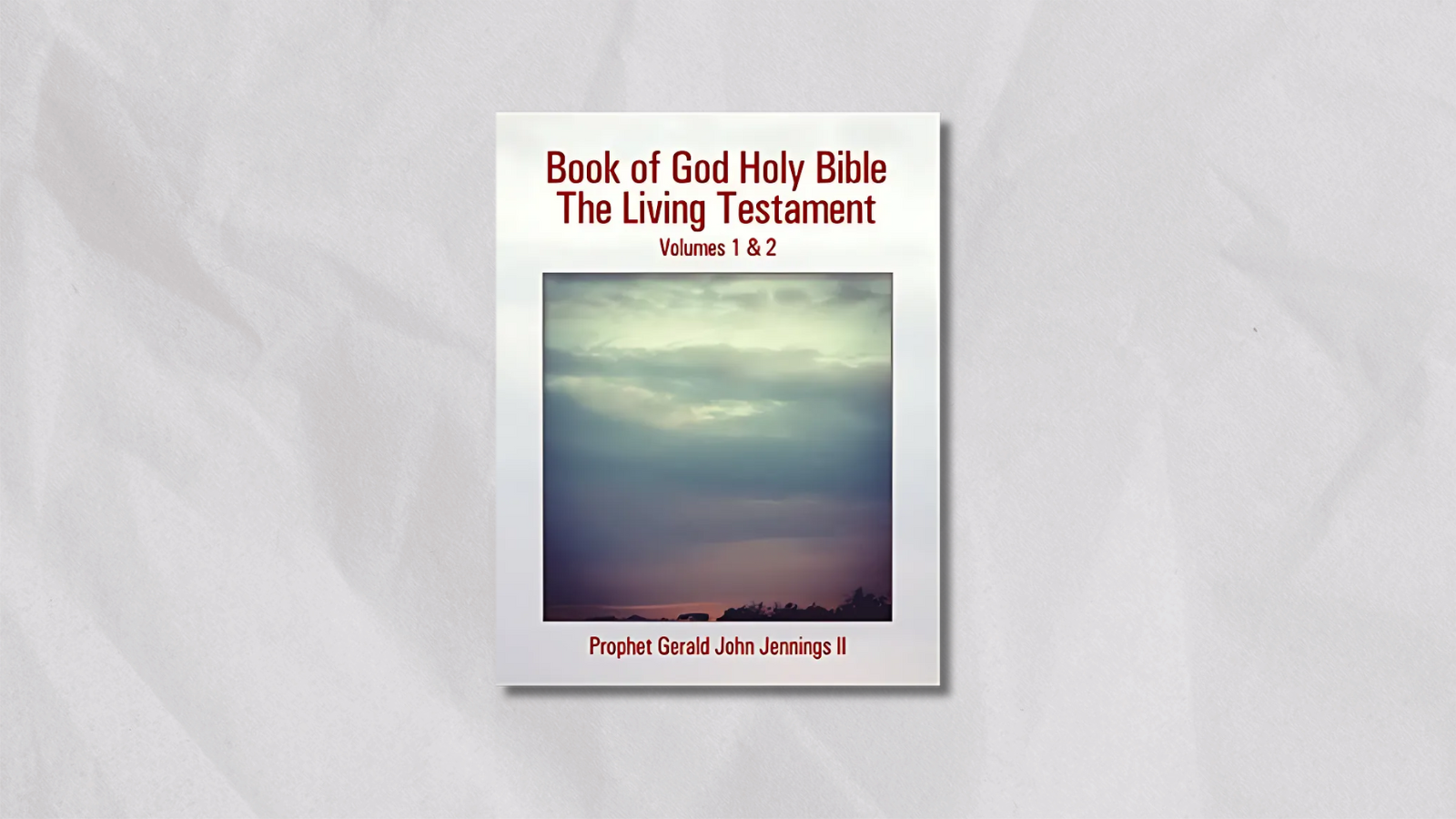Religious literature has seen few works generate as much debate and controversy as Prophet Gerald John Jennings II’s “Book of God Holy Bible The Living Testament.“ The September 2019 publication has sparked passionate discussions about modern prophecy, divine communication, and religious authority in an era of widespread skepticism.
A New Chapter in Biblical Literature
Prophet Gerald John Jennings II describes himself boldly as “God’s Blessed Son” and “the 2nd son of God Jehovah and the brother of Jesus Christ.” He has authored what he claims to be a direct addition to the Holy Bible. The book spans 240 pages in both e-book and softcover formats and claims to contain excerpts from Jesus Christ and Jehovah’s Holy Family in Heaven.
“I am the living Prophet and Ambassador of God to his people,” Prophet Gerald John Jennings II declares. “I have been without my body in Heaven twice now and can bring God and the Holy Family to life in ways never before possible.” This declaration has drawn attention from religious scholars, the faithful, and skeptics alike, sparking intense discussions about modern revelation’s place within established religious doctrine.
Bridging Ancient Texts and Modern Spirituality
The “Living Testament” connects ancient biblical texts with contemporary spiritual experiences. Jennings states that his work represents direct communication from divine sources. “My Bible comes directly from God Jehovah and Jesus Christ,” Prophet Gerald John Jennings II explains. “It offers new insights and guidance for the modern world, addressing spiritual issues that people face today.”
This religious writing method raises profound questions about faith’s evolution in the 21st century. People seek updated spiritual guidance that speaks to current issues while maintaining traditional beliefs, especially during times of technological advancement, social changes, and global challenges.
Content and Structure
The details about “The Living Testament” remain limited. Prophet Gerald John Jennings II presents his work as a continuation of biblical narrative. He structured the book into two volumes, demonstrating his comprehensive revelations.
Prophet Gerald John Jennings II maintains that his writings reveal new perspectives on divine will and guide readers through contemporary issues absent from the traditional Bible. His interpretation and application of ancient wisdom to modern contexts create questions about his navigation of potential contradictions or expansions of established doctrine.
Theological Implications
“The Living Testament” presents substantial theological challenges. Traditional Christianity maintains that the biblical canon permits no new revelations. Jennings’ claim of divine authorship challenges this basic principle, potentially transforming how believers view ongoing revelation and prophetic authority.
Jennings’ declaration of himself as the “2nd Son of God” challenges core Christian beliefs about Jesus Christ’s unique divinity. This statement positions “The Living Testament” beyond a supplementary text into a potentially transformative work that could redefine fundamental aspects of Christian theology for its believers.
Controversy and Conversation
Religious leaders and scholars have debated the legitimacy of Prophet Gerald John Jennings II’s claims vigorously. Opinions range from enthusiastic acceptance to strong rejection.
Critics link Jennings’ work to historical false prophets and misguided spiritual leaders. They reference the Bible’s warnings about individuals who claim divine authority and add to scripture. Supporters argue for God’s continuous revelation and consider Jennings’ experiences authentic continuations of biblical prophecy.
The controversy has helped Jennings gather a substantial following. His reported Facebook following exceeds 50,000 people, showing considerable interest in his message. This growing audience reflects modern spirituality’s trend where individuals transcend traditional religious boundaries to create inclusive spiritual narratives.
The Future of Faith
“The Living Testament” continues to generate discussion and serves as a catalyst for broader conversations about religious texts and prophetic claims in modern times. The work contributes to ongoing dialogue about faith, prophecy, and religious literature’s role today, regardless of its reception as divine revelation or contemporary spiritual interpretation.
Prophet Gerald John Jennings II plans to expand his message through a film inspired by his story, collaborating with producers Jared Safier and David Seth Cohen. This multimedia messaging strategy reflects religious communication’s digital transformation.
The discussions about prophecy and divine communication persist. “The Living Testament” exemplifies humanity’s eternal quest for spiritual connection and understanding in a changing world. It challenges readers to consider fundamental questions about revelation’s nature, scripture’s boundaries, and divine communication’s possibility in modern times.
The future will determine whether religious authorities embrace “The Living Testament” as a genuine addition to biblical canon or reject it as a misguided spiritual venture. The work has rekindled historical debates about prophecy, divine authority, and religious texts’ nature in a world seeking spiritual guidance and meaning.








